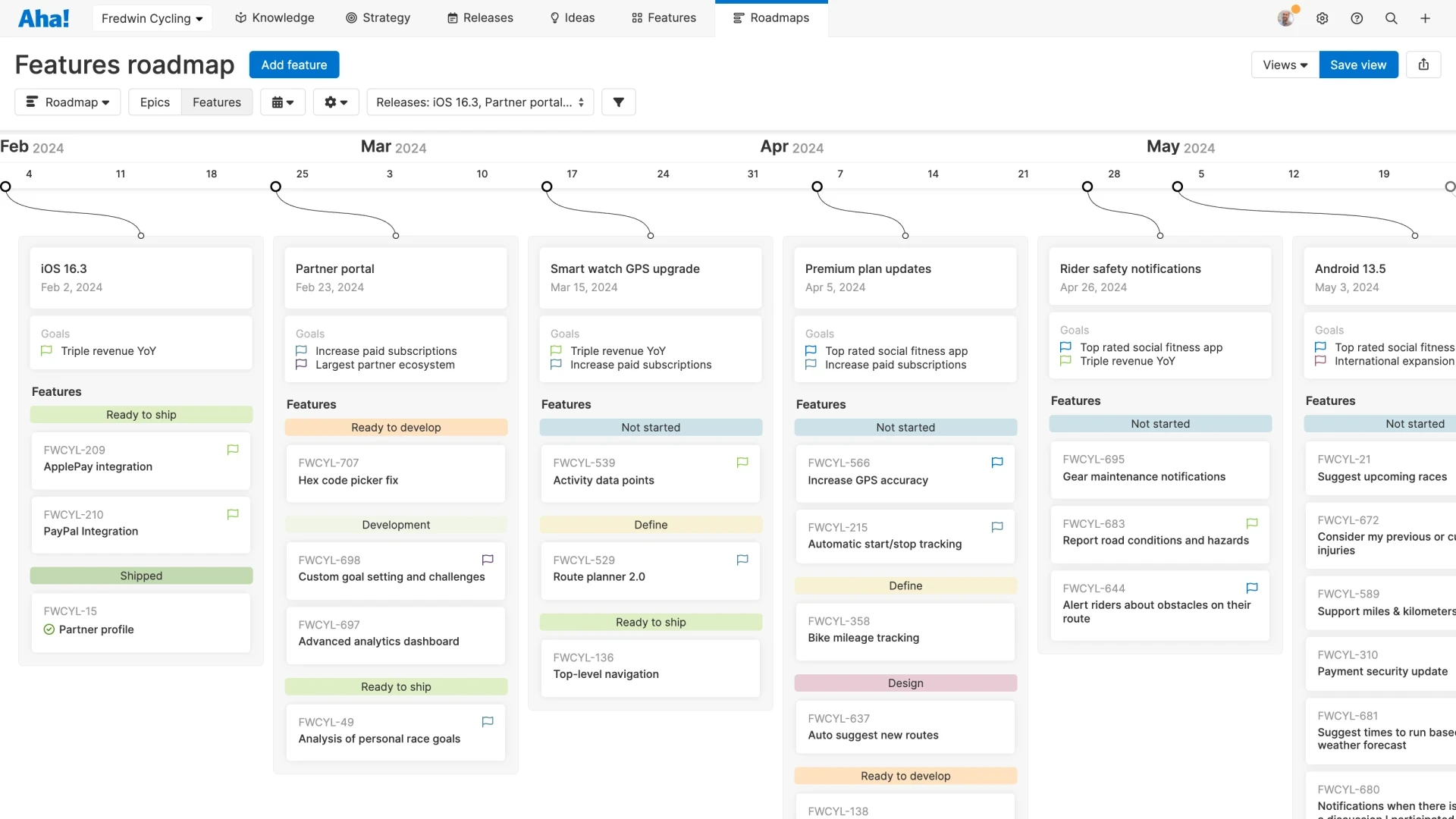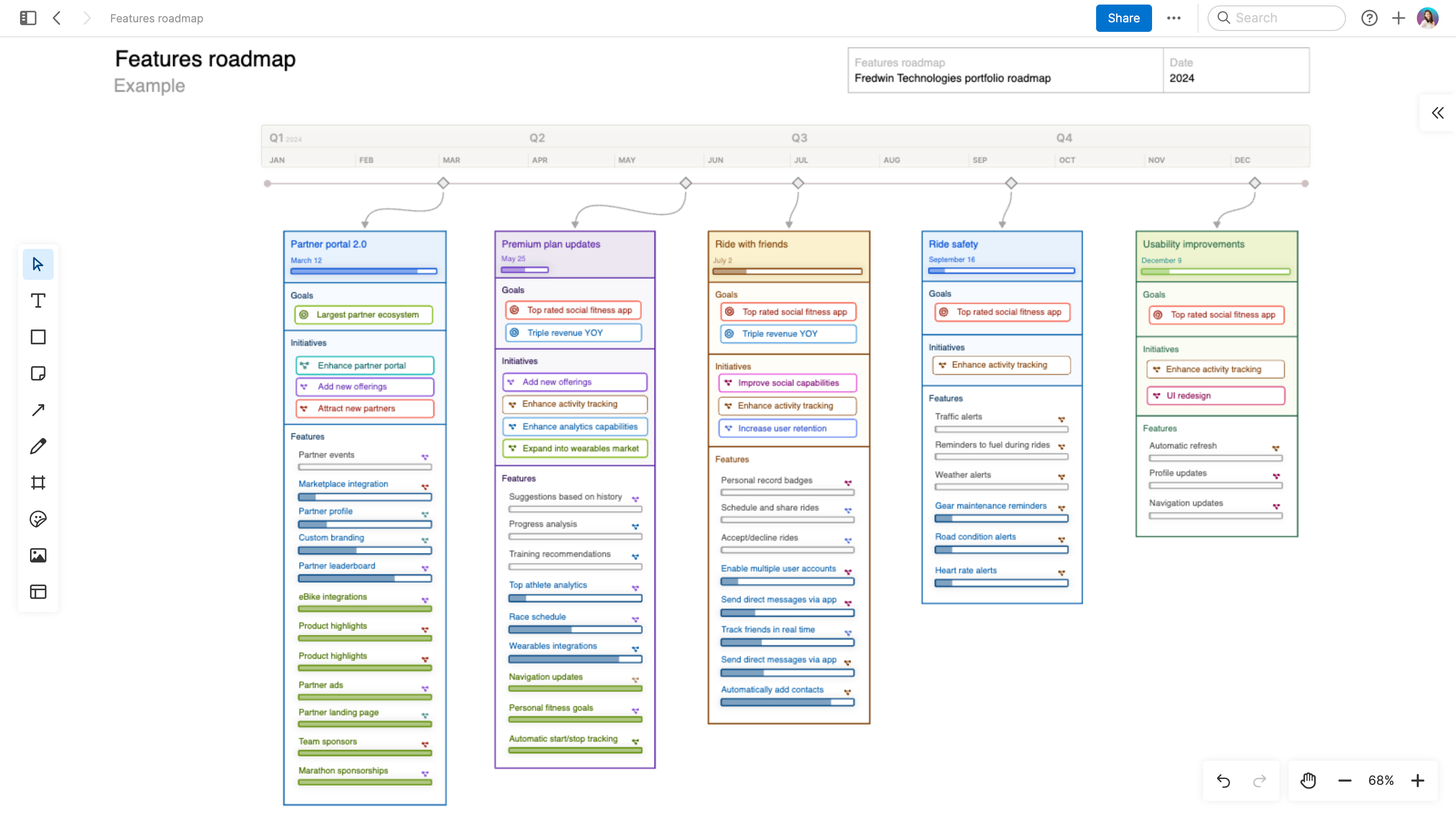What is a features roadmap?
Last updated: April 2024
A features roadmap is a visual timeline of what the product team is working on and when you will deliver it. It shows a detailed view of the specific functionality or improvements the team is building, along with a time frame for delivery.
Besides capturing the "what" and "when" of the team's work, a features roadmap also gives context around the product plans — including how each feature supports the goals and initiatives, which features will ship with each release, and progress towards completion. Product managers use a features roadmap to communicate the details of the work to the cross-functional product team and broader organization (and sometimes customers, too).
Discover how a features roadmap can help you transform your product plans into action — aligning the team around what you will all do to deliver greater value to your customers. Jump ahead to any section:

With Aha! software, you can build a visual timeline of planned features that communicates what you are doing, why it matters, and when you will deliver it.
What is a feature?
To better understand a features roadmap, let's first talk about what a feature is. A feature is a specific functionality — such as a capability, component, or performance upgrade — that you deliver to end users. Several features are often grouped under a release which details all the work that needs to happen to ensure a successful launch.
The components of a feature vary depending on what you are building and how your product team manages workflows. But in general, features should include:
Strategy: Connect features to the product goals and initiatives they support
Description: Outline what the feature will do and which problem(s) it is designed to solve
Requirements: Describe capabilities that need to be built to deliver the feature
Timing: Define when to expect delivery
Ownership: Determine who is responsible for completing the work
Features are the building blocks of your product. They solve pain points, showing customers that you not only listen, but act. Each new feature has the potential to amplify your product’s lovability — adding value for customers and for the business.
Related: A checklist for defining product features
Benefits of a features roadmap
Using a features roadmap is a dynamic way to stay connected and galvanize action — ensuring each new feature is as lovable as the last. Here are some of the core benefits:
Link features to the product goals and initiatives — ensuring you are investing in the work that matters
Align the product team around what you are doing, why it matters, and when you will deliver it
Clarify timing and priorities between cross-functional teams such as engineering
When everyone understands what you are working towards together, you can all focus on delivering more value to customers and the business.
Editor's note: Although the video below still shows core functionality within Aha! software, some of the interface might be out of date. View our knowledge base for the most updated insights into Aha! software.
